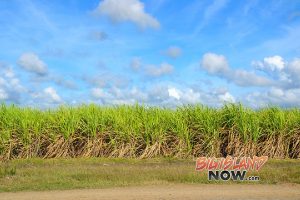How is DOE Addressing Soil Contaminants at Hawai‘i Schools?
 The Hawai‘i State Department of Education promised to address concerns over contaminated soil found at 18 schools on the Big Island by implementing environmental hazard management plans tailored to each unique situation.
The Hawai‘i State Department of Education promised to address concerns over contaminated soil found at 18 schools on the Big Island by implementing environmental hazard management plans tailored to each unique situation.
For a list of which schools were found to been polluted with hazardous material, refer to Big Island Now’s previous article.
The soil tested positive for lead, arsenic and chlordane, an organochlorine found in pesticides. The Hawai‘i Department of Health has determined this contamination is likely due to the past use of lead-based paints, leaded gasoline, and weed and termite control efforts during the sugarcane plantation era.
The soil can cause health problems when children play outside and contaminated dirt comes in contact with their skin. Some contaminants can also become airborne and inhaled as dust. According to DOH Toxicologist Dr. Diana Felton, “sandboxes were not particularly tested.”
 Apparently, different entities have set varying standards for what is considered to be a safe toxicological level in the soil.
Apparently, different entities have set varying standards for what is considered to be a safe toxicological level in the soil.
When asked what levels are considered acceptable in the soil for each of these three contaminants, Dr. Felton wrote in an email to Big Island Now, “This is a complicated question, especially for arsenic for, which only a fraction is bio-accessible (able to be absorbed and therefore potentially harmful). Generally: Lead: ≤200 mg/kg Bioaccessible (not total) Arsenic: ≤95 mg/kg Chlordane: ≤17 mg/kg.”
However, the US Environmental Protection Agency standard for arsenic is 0.39 mg/kg.
Big Island Now was told the following schools had the highest levels for the listed contaminants: The highest for the lead was 3800 mg/kg at Hilo Union Elementary. The highest for arsenic was 2,700 mg/kg at DeSilva Elementary. Kapiolani and Hilo Union were the highest for chlordane at 110 mg/kg.
In 2006 in Kea‘au, residents’ nails, hair and urine were tested after arsenic was found to be at an average of 500 mg/kg in the soil around, parks, farms, residential areas and Kea‘au Elementary, Middle and High schools.
The DOH toxicologist at that time, Barbara Brooks, said, “The investigation could not determine if living, gardening or playing near arsenic-contaminated soil and bringing residual soil or dirt into the home from normal household activities contributed to urine arsenic levels. The arsenic levels were similar to people who frequently eat seafood, seaweed, rice and other food sources containing arsenic.”
The DOE said it did not identify arsenic above health level risks in the top four to six inches of soil that were tested. The statistics of toxicology levels significantly higher than what is considered safe may seem contradictory: however, Dr. Felton explained that “Based on the usage of the different areas, we do not expect there to be a significant exposure of these chemicals into someone’s body.”
Arsenic exposure can lead to skin diseases, such as arsenical keratinosis. This is a disease in which the palms of the hands and soles of the feet form scaly skin or dark patches. It can also cause warts, lesions and an increase the risk of skin, lung, liver, kidney and bladder cancer. Chronic exposure can also cause the veins and arteries to suddenly constrict, which can reduce blood flow and nerve function. Arsenic exposure can even lead to lung distress and death.
Chlordane
 Chlordane is known to affect the digestive system, the nervous system and liver. Exposure at low levels may cause symptoms such as headache, vomiting, confusion, stomach cramps, vision problems and discomfort. Some studies have also linked it to the development of diabetes. Chlordane is also one of the most toxic chemicals to the thyroid.
Chlordane is known to affect the digestive system, the nervous system and liver. Exposure at low levels may cause symptoms such as headache, vomiting, confusion, stomach cramps, vision problems and discomfort. Some studies have also linked it to the development of diabetes. Chlordane is also one of the most toxic chemicals to the thyroid.
Lead
Approximately one out of every 100 children in Hawai‘i had elevated blood lead level from 2015 to 2017. There is no safe level of lead especially for children who are at even higher risk for lead poisoning because their bodies are still developing. According to the DOH, the highest for lead was 3,800 mg/kg at Hilo Union Elementary.
 Even at low levels, lead can affect a child’s brain development, reducing IQ and creating learning and behavior problems. In fact, children of parents who have job-related exposure and brought contaminants home have suffered neurological effects and mental retardation. The symptoms of lead poisoning, although often overlooked, include abdominal pain, constipation, fatigue, headache, irritability, loss of appetite, memory loss, pain or tingling in the hands or feet, weakness, anemia, kidney damage, brain damage and death. The damage is permanent, although signs may not present themselves right away.
Even at low levels, lead can affect a child’s brain development, reducing IQ and creating learning and behavior problems. In fact, children of parents who have job-related exposure and brought contaminants home have suffered neurological effects and mental retardation. The symptoms of lead poisoning, although often overlooked, include abdominal pain, constipation, fatigue, headache, irritability, loss of appetite, memory loss, pain or tingling in the hands or feet, weakness, anemia, kidney damage, brain damage and death. The damage is permanent, although signs may not present themselves right away.
What is Being Done?
School water is planned to be tested for lead in high-risk schools beginning in late 2019 or early 2020, due to part of the EPA WIIN Grant, according to the DOH.
The DOE originally stated it addressed the highest contamination areas by restricting access to areas, removing and properly disposing of contaminated soil, adding uncontaminated soil and by planting ground cover.
However, Dr. Felton stated, “According to the DOE, while soil removal is an option, no soil is planned for removal at this time.”
 When asked about the apparent contradiction in statements, the DOH responded, “We were under the impression DOE had removed soils in some of the areas right after the results came out, but moving forward, we are not aware of plans related to EMHPs [Environmental Health Management Plans] to remove soil at this time.”
When asked about the apparent contradiction in statements, the DOH responded, “We were under the impression DOE had removed soils in some of the areas right after the results came out, but moving forward, we are not aware of plans related to EMHPs [Environmental Health Management Plans] to remove soil at this time.”
Communications Director Lindsay Chambers from the DOE stated, “The department removed soil at the impacted campuses for projects unrelated to the Environmental Health Management Plan.”
The DOE has been fined $1.4 million in the past for the way it disposed of soil that tested positive for lead and arsenic at Radford High School.
The DOH said school nurses will not be screening for potential exposure.
 Dr. Felton said, “There is no established way to screen for arsenic or chlordane. Blood and urine testing for these chemicals are not useful. For arsenic—there are many things that can alter the results, including the way the test is collected and what people have been eating. For both chlordane and arsenic, there is no evidence-based value for intervention. This means that the blood or urine levels do not indicate whether a person may have health effects or tell you when a treatment (if available) should be done. For lead, blood testing is straightforward and there are known standards. If parents are concerned, they should talk to their child’s doctor about testing for lead.”
Dr. Felton said, “There is no established way to screen for arsenic or chlordane. Blood and urine testing for these chemicals are not useful. For arsenic—there are many things that can alter the results, including the way the test is collected and what people have been eating. For both chlordane and arsenic, there is no evidence-based value for intervention. This means that the blood or urine levels do not indicate whether a person may have health effects or tell you when a treatment (if available) should be done. For lead, blood testing is straightforward and there are known standards. If parents are concerned, they should talk to their child’s doctor about testing for lead.”














